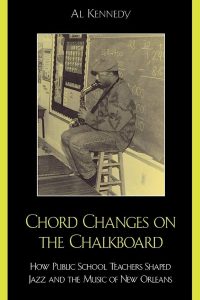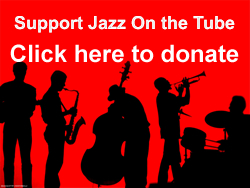Blog, Video
A long and interesting conversation between Jonathan Stout and Denis Chang.
“Swing was the House music of the 1930s.” – Jonathan Stout
This is quite an audacious statement made by contemporary swing guitarist Jonathan Stout. (If you’re unfamiliar with House music, please refer to the note at the end of this page.)
This soundless video clip is from 1938.
I would guess that the average age of the people there was 22 years old, which means they were born in 1916. If any of them are still around, they would be 107 years old.
In other words, no one reading this has ever experienced anything like this:
Watching an ARENA full of young people dancing to jazz.
* House is a music genre characterized by a repetitive four-on-the-floor beat and a typical tempo of 120 beats per minute. It was created by DJs and music producers from Chicago’s underground club culture in the early/mid-1980s.
– Ken McCarthy
Jazz on the Tube
P.S. Our unique programming is made possible by help from people like you. Learn how you can contribute to our efforts here: Support Jazz on the Tube
Thanks.
Blog, Books
Chicago, Detroit, Pittsburgh, Fort Worth, New Orleans, and probably many other cities—I’m not familiar with all the details.
What did they all have in common when jazz was in its fullest flower?
Incredibly well-developed music education programs for children, supported locally and guided by exceptional local musicians who spared no effort.
In this interview, conducted by Jordan Hirsh of ACloserWalk.com, we take out the microscope and look at how this worked in one city: New Orleans.
Click here to see the entire interview
– Ken McCarthy
Jazz on the Tube
P.S. Our unique programming is made possible by help from people like you. Learn how you can contribute to our efforts here: Support Jazz on the Tube
Thanks.
Blog
– Ken McCarthy
Jazz on the Tube
P.S. Our unique programming is made possible by help from people like you. Learn how you can contribute to our efforts here: Support Jazz on the Tube
Thanks.
Blog
Run by a master player who played with everyone and called Monk a friend.
His students included Joe Henderson, Paul Chambers, Yusef Lateef, Charles McPherson, and James Jamerson. Even John Coltrane dropped in on him.
– Ken McCarthy
Jazz on the Tube
P.S. Our unique programming is made possible by help from people like you. Learn how you can contribute to our efforts here: Support Jazz on the Tube
Thanks.
Blog
Yeah, I said it. There is one most beautiful club and it’s The Falcon in out-of-the-way Marlboro, NY. A musician’s favorite.
The visionary founder Lee Falco passed away in 2021, but his wonderful son, musician, and drummer Lee Falco is keeping the flame burning bright.
Every club owner should be taking notes. It’s not easy to run a venue Falco-style, but it’s worth studying and meditating on.
Their website: https://www.liveatthefalcon.com
– Ken McCarthy
Jazz on the Tube
P.S. Our unique programming is made possible by help from people like you. Learn how you can contribute to our efforts here: Support Jazz on the Tube
Thanks.
Blog
Bret Primack hipped me to this, and I had to see for myself.
Sure enough.
Kids are embracing big band music – for a most unexpected reason.
– Ken McCarthy
Jazz on the Tube
P.S. Our unique programming is made possible by help from people like you. Learn how you can contribute to our efforts here: Support Jazz on the Tube
Thanks.



 Louis Armstrong
Louis Armstrong